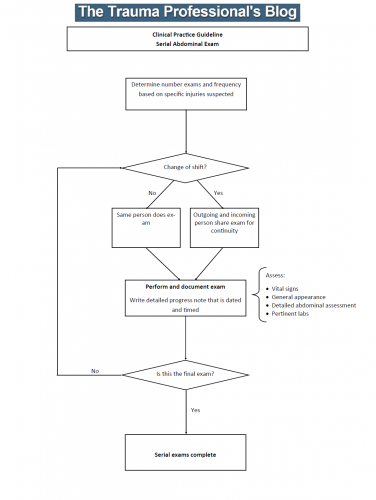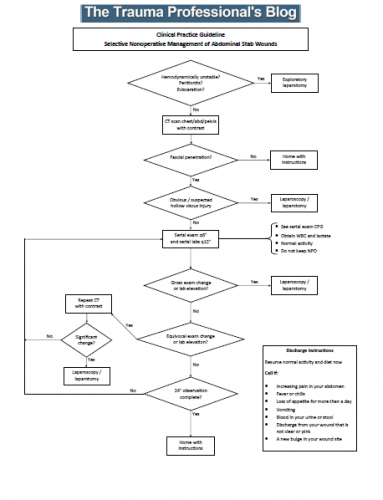Medicine, in general, and trauma care, specifically, require frequent communication. These communications may be between two providers to maintain continuity of care or between providers and patients to explain it. Unfortunately, the Joint Commission has identified breakdowns in the process as a root cause of preventable events and a significant factor in preventable death.
To address this problem, many centers have sought to standardize this process, which may include some of the principles in my previous post. However, until now, there have been no evidence-based recommendations for this practice.
The Eastern Association for the Surgery of Trauma performed a systematic review and meta-analysis of the literature to develop a practice guideline. They focused specifically on handoffs for acute care surgery during perioperative interactions, patients arriving in the trauma bay, and patients transitioning to or from the ICU and floor. The goal was to reduce complications, handoff errors, medical errors, and preventable events.
The literature on this topic was searched from 1960 to 2021, and only observational and randomized studies were included. This yielded only ten papers that met all search criteria. The reviewers then used these papers to answer three questions. These and their answers are outlined below.
Question 1. Should perioperative interactions in the care of ACS patients (P) include a standardized handoff versus current process without a standardized handoff to help reduce clinical complications, handoff errors, medical errors, and preventable adverse events?
Patients who received a standardized handoff were significantly less likely to experience a handoff error. However, the impact on medical errors and adverse events could not be gauged because only one paper covered these problems.
Question 2. Should EMS utilize a standardized handoff at the arrival of trauma patients versus the current process without a standardized handoff to help reduce clinical complications, handoff errors, medical errors, and preventable adverse events?
We instituted a trauma team EMS timeout process in 2012, which persists to this day. Please take a look at my post here. The prehospital providers like it because they feel like they are more a part of the team. The receiving team can listen to their report without distraction. But what does the literature say? Unfortunately, we don’t know yet. Only one published paper covered this topic, and it included only 18 patients. Thus, no conclusions can be drawn.
Question 3. Should intra/inter floor and ICU interactions in the care of ACS patients include a standardized handoff versus currently process without a standardized handoff to help reduce clinical complications, handoff errors, medical errors, and preventable adverse events?
Significantly fewer preventable adverse events occurred when a standardized handoff was used. There was no difference in clinical complications. The impact on medical errors could not be evaluated because only one study assessed this.
Bottom line: The general belief is that using a standardized handoff is a good thing. But I think you see the theme here. As in most EAST systematic reviews, there is painfully little high-quality data available for us to prove it. Most of the mundane, day-to-day things we do and decisions we make as trauma professionals are too dull to perform a study about.
From the few papers available for this guideline, standardized handoffs are a good thing. They decrease handoff errors and reduce preventable adverse events as well. The EMS to trauma team handoff is well-received and is subjectively valuable. Unfortunately, there is little real data to prove this.
Overall, the real data on this topic is weak, and much more work needs to be done. I would encourage all trauma professionals to develop and refine their handoff processes. I strongly recommend coupling that with your own study so you can teach the rest of us how good it really can be.
Reference: Handoffs and Transitions of Care: A Systematic Review, Meta-Analysis, and Practice Management Guideline from the Eastern Association for the Surgery of Trauma. J Trauma, Publish Ahead of Print
DOI: 10.1097/TA.0000000000004285



